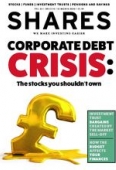Archived article
Please note that tax, investment, pension and ISA rules can change and the information and any views contained in this article may now be inaccurate.
The tax quirks that mean you pay up to 200,000%... and how to avoid them

The tax system has become so complicated that many people find they are paying far more than the top rate of tax, as a £1 pay rise can mean certain benefits or allowances are whipped away.
The highest rate of income tax in the UK is 45% for anyone earning £150,000 or more. But some people on far lower incomes are facing tax rates many multiples higher – in the most extreme cases an effective tax rate of 200,000%.
It means that many people find a small pay rise can actually end up costing them money as they lose Government help or tax breaks. The good news is that some smart planning can help to mitigate the effects. So what are the main culprits and how can you mitigate them?
PERSONAL SAVINGS ALLOWANCE
The personal savings allowance was introduced in 2016 and gives basic rate taxpayers their first £1,000 of savings income tax free, while higher rate tax payers get a £500 limit. However, once you move into the additional rate tax bracket you lose that entire allowance. This means if you move into a new tax bracket you’ll see your tax bill rise.
If you go from earning £50,000 to £50,001 you’ll see the allowance cut in half. If you previously had £1,000 of savings income covered by the allowance you’ll now face an extra tax bill of £200.
And if you go from earning £150,000 to £150,001 you’ll lose the allowance. In that situation if you had £500 of savings income that was previously tax free, you’ll now be taxed at 45% on it – equating to £225 of tax. That makes the effective tax rate on your £1 salary increase 22,500%.
Anyone who is nearing the threshold for the next tax bracket should think about sheltering their savings income from tax by using an ISA. This means they would avoid paying the tax bill and their money could continue to grow tax free.
CHILD BENEFIT
All parents are entitled to child benefit but as soon as one of them earns more than £50,000 they will see the amount they get whittled away. The benefit is completely wiped out when they earn £60,000 or more.
A parent with two children will get £1,788.80 a year in child benefit, but for every £1,000 they earn over £50,000 they will lose 10% of their child benefit. For example, someone seeing their salary rise to £51,000 would get £178.88 less from their child benefit.
These earnings will be in the 40% income tax bracket and once the loss of child benefit is factored in their effective tax rate is 57.89%. This is because the 40% income tax of the £1,000 extra income will equate to £400, plus the loss of £178.88 of child benefit means they are paying £578.88 on that extra £1,000 salary, which equates to 57.89%.
However, parents who haven’t tipped too far over the threshold can get around this by increasing their pension contributions.
What’s counted for the purposes of the child benefit ‘High Income Charge’ is your salary after any pension deductions. This means if you contribute enough to your pension to get your salary back to £49,999 then you’ll get the full child benefit again. Another option is to make charitable donations with the income over the £50,000 limit, which you’ll need to declare to HMRC on your tax return.
The frustrating factor for many parents is that the rule applies if one parent is earning more than £50,000, regardless of their partner’s income. So you could have both parents earning £48,000 each and have no problem, but if one earns nothing and the other earns £60,000 then you’ll lose the benefit. While there are ways around the charge, ultimately some people will struggle to contribute enough to their pension to bring their income down below the £50,000 limit.
MARRIAGE ALLOWANCE
Married couples are eligible for a tax break so long as one of them earns less than the personal allowance – £12,500 for this tax year – and the other half earns the basic rate of tax, so less than £50,000. It means that the lower earning partner can transfer up to £1,250 of their unused personal allowance to their spouse – with a maximum saving of £250 in a tax year.
However, once the higher earning partner earns more than that £50,000 they can’t use the tax break, and it means the couple lose it entirely. Assuming someone is getting the full £250 tax break a year and gets a pay rise from £50,000 to £50,001, the effective tax rate is 25,000% (£250 of tax because of £1 of extra income).
PERSONAL ALLOWANCE
Only around 3% of the population have income of £100,000 a year or more, but that group face a massive tax on the money between £100,000 and £125,000. This is because these earners lose their tax-free personal allowance, at a rate of £1 for every £2 they earn over £100,000.
For example, someone who gets a pay rise from £100,000 to £110,000 will lose £5,000 of their personal allowance. They will be taxed at 40% on their £10,000 pay rise, amounting to £4,000, and then taxed at 40% on their lost personal allowance, amounting to £2,000. This means they pay £6,000 on the £10,000 pay rise – an effective tax rate of 60%.
To get around this high rate you can increase your pension contributions. If you make sufficient contributions to bring your salary down to £100,000 then you won’t lose any of your personal allowance. By doing this your personal allowance will be reinstated and you’ll get 40% tax relief on your pension contributions too.
TAX-FREE CHILDCARE
The tax-free childcare system is intended to make the cost of childcare cheaper and means you can get up to £2,000 a year per child towards childcare, with the Government paying £2 for every £8 you pay in – effectively giving you basic rate tax back.
However, the scheme is only available for couples where both have an income of less than £100,000 – anyone earning more than this is cut off from using it. As with the child benefit rule above, a couple with income of £99,000 each would be eligible, but a couple where one earns £15,000 and the other earns £101,000 wouldn’t be.
In the most extreme example, if your income rises to £100,001, you’ll lose the £2,000 benefit, which equals a tax rate of 200,000%. Anyone earning over the £100,000 limit can use pension contributions or gift aid to reduce their income below the threshold.
Important information:
These articles are provided by Shares magazine which is published by AJ Bell Media, a part of AJ Bell. Shares is not written by AJ Bell.
Shares is provided for your general information and use and is not a personal recommendation to invest. It is not intended to be relied upon by you in making or not making any investment decisions. The investments referred to in these articles will not be suitable for all investors. If in doubt please seek appropriate independent financial advice.
Investors acting on the information in these articles do so at their own risk and AJ Bell Media and its staff do not accept liability for losses suffered by investors as a result of their investment decisions.

 magazine
magazine











